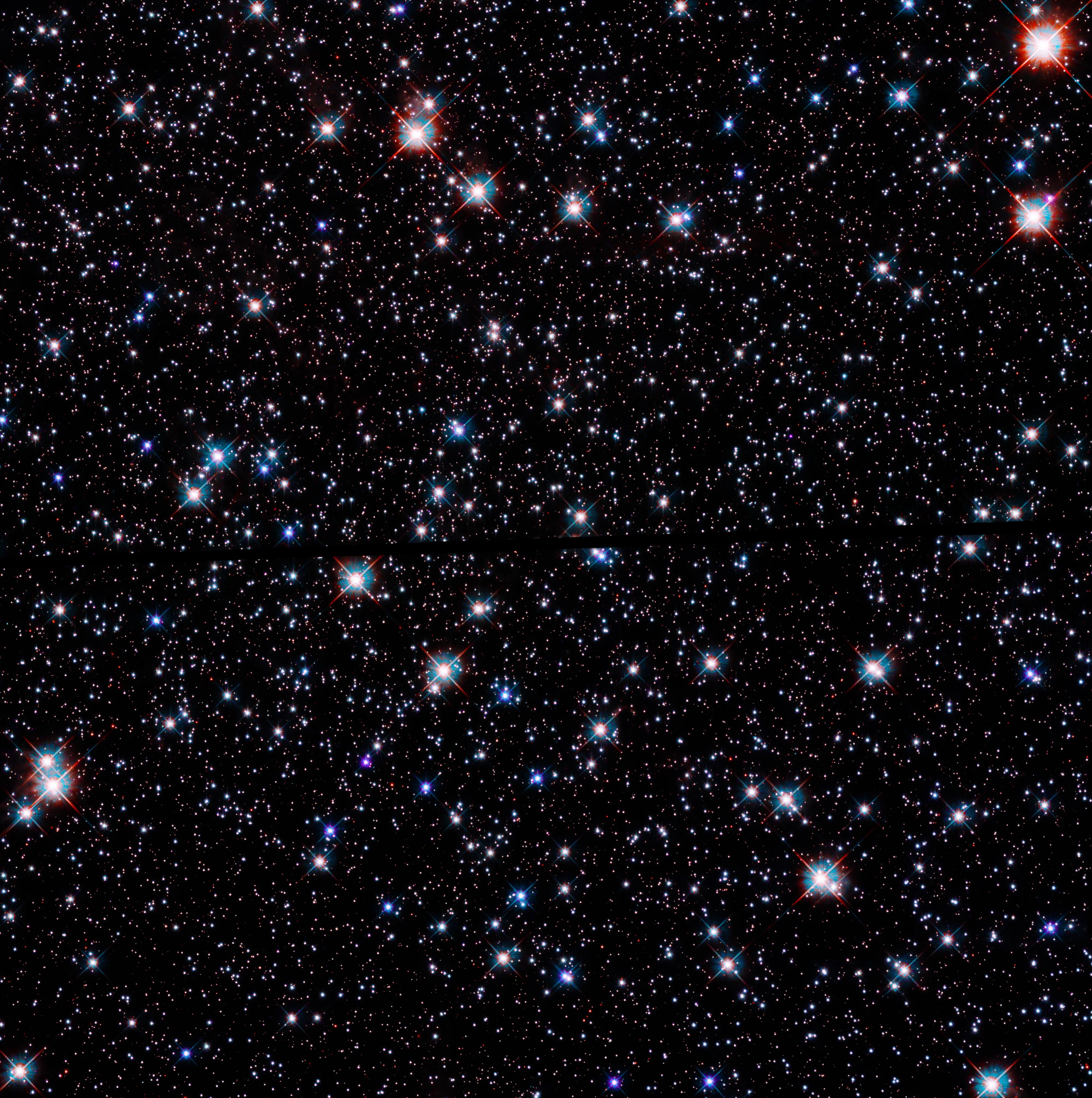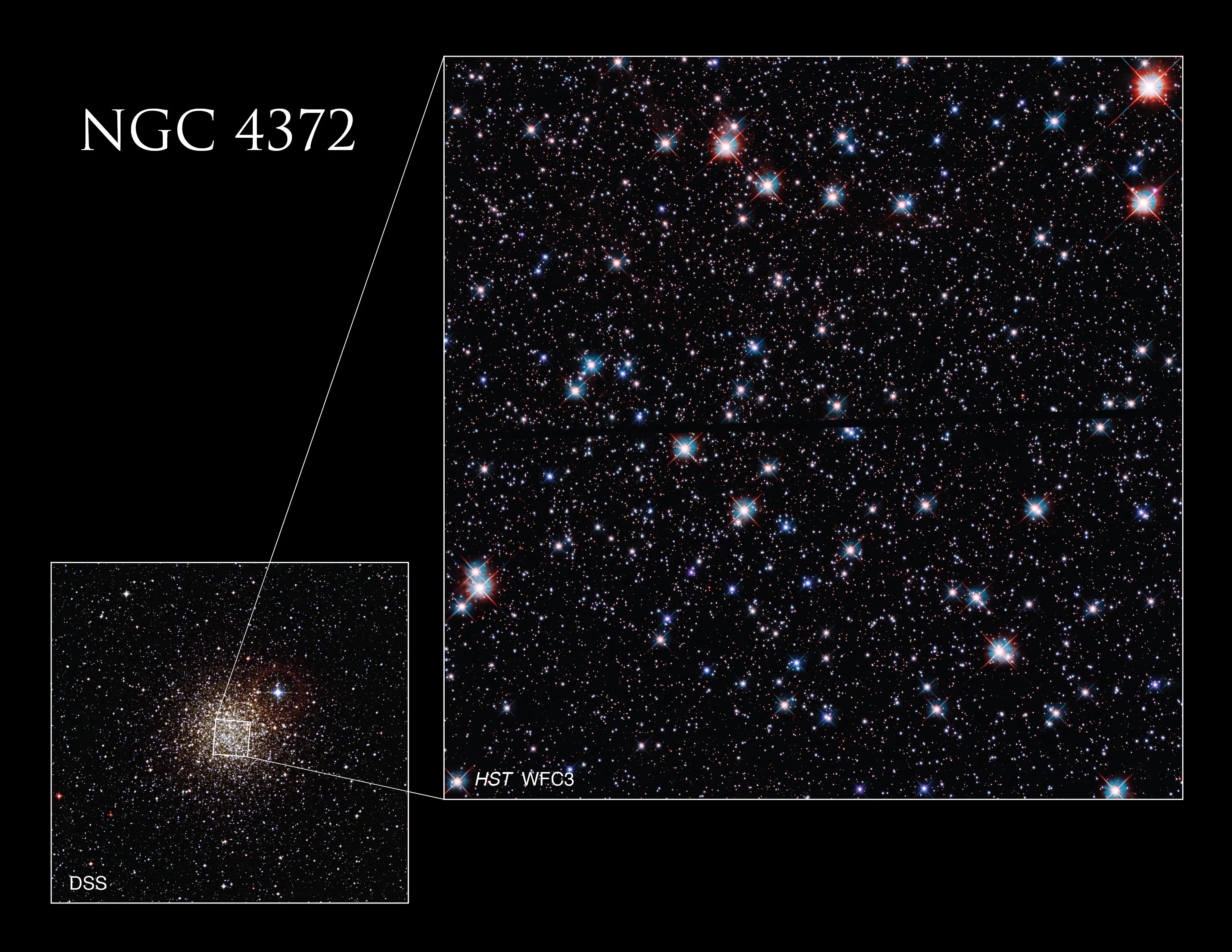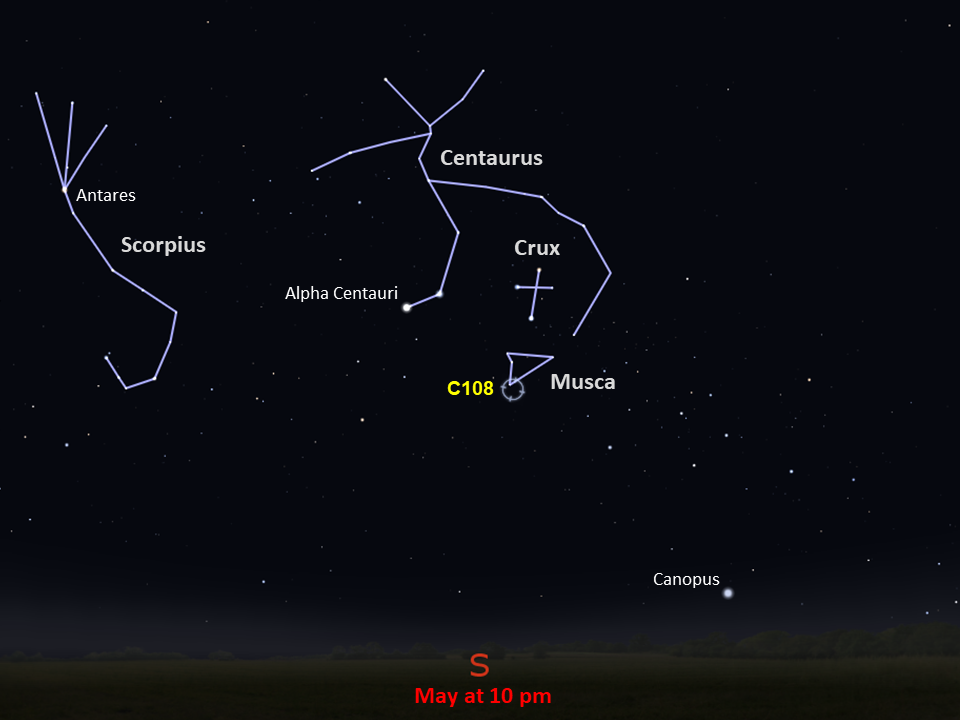Caldwell 108
The colorful stars of Caldwell 108 offer clues to the cluster's internal dynamics and subsequent evolution.
Distance
19,000 light-years
Apparent Magnitude
10.0
constellation
Musca
object type
Globular Cluster

For many years, all of the stars in globular clusters were believed to form in the same stellar nursery and grow old together. The most massive stars exhaust their fuel supply in less than a million years and end their lives in spectacular supernova explosions. This process should have left globular clusters like Caldwell 108 (or NGC 4372) with only old, low-mass stars. However, young, blue stars have been spotted amongst the ancient stars in Caldwell 108 and many other clusters like it. Astronomers think that these stars, called blue stragglers, are a result of collisions between stars or other stellar interactions. Such interactions are not uncommon within densely populated globular clusters, in which up to a few million stars are tightly packed together.

This Hubble image shows a portion of Caldwell 108 centered on the cluster’s core. It combines observations taken in visible, ultraviolet, and infrared light with Hubble’s Wide Field Camera 3. This camera uses two detectors that are near but not exactly next to each other, leaving a thin gap in the exposure. This image of Caldwell 108 was taken to prove that a new method of using Hubble’s gyroscopes (developed to extend their lifetime) would still produce the high-quality science observations Hubble is known for.
Caldwell 108 is located 19,000 light-years away in the constellation Musca. It was discovered in 1826 by the Scottish astronomer James Dunlop from his observation post in Australia. The globular cluster can be seen year-round from most of the Southern Hemisphere, but is highest in the late evening during autumn. With an apparent magnitude of 10, it is visible in a small telescope and appears as a large, faint patch just west of the Dark Doodad Nebula, an opaque lane of gas and dust that obscures a portion of the Milky Way. A relatively bright (magnitude 6.5) star shines close to the cluster.

Glossary
Apparent Magnitude - The brightness of an astronomical object as seen from Earth, influenced by the object's distance from Earth, its absolute magnitude, and even gas and dust that lie between the object and Earth.
Blue Straggler - A blue star in a star cluster that appears to be far younger than its neighbors, likely resulting from collisions between stars or by other stellar interactions.
Globular Cluster - A spherical group of stars that are gravitationally bound to each other, with most of the stars concentrated at the cluster’s center.
Supernova - The explosion of a massive star at the end its life, which ejects material into space and causes the star to temporarily brighten in our sky.
Explore Hubble's Caldwell Catalog
The following pages contain some of Hubble’s best images of the Caldwell objects.

Caldwell 1
Also known as NGC 188, this group of stars formed from a large cloud of gas making the stars roughly…

Caldwell 2
This shell of gas is expanding outward, away from the dying star within.

Caldwell 3
This barred spiral galaxy was first spotted by British astronomer William Herschel in April 1793 in the constellation Draco.




